
When envisioning the climate in Colorado, frigid temperatures and deep snow always come to mind. While winter can be brutal in parts of the state, you may be surprised to know that many lower-elevation places actually have fairly mild conditions and can even have some warm days.
You’ll always find the harshest temperatures in the mountains, where the higher elevation drastically affects the weather. In fact, it’s one of the bonuses of living here, you typically find warmer weather heading down, or cooler weather heading up.
The Western Plateau (by Grand Junction and Fruita), the Front Range Urban Corridor (Fort Collins, Denver, Colorado Springs, Pueblo), and the Eastern Plains (Sterling, Limon, La Junta) are a few places around Colorado where towns and cities have much milder winter conditions, with warm days from time to time.
For new and future residents, living in one of the warmest places in Colorado provides plenty of benefits. While avoiding the worst of the weather, many of the more temperate places are still close enough to the mountains, which means that you can take a day trip to enjoy all of the Rocky Mountain activities.
For short and long-term stays, Colorado’s warmest towns and cities are guaranteed to make you fall in love with this mountainous state.
We’ve researched the communities with among the mildest temperatures in the Centennial State. All of the towns and cities that have made our list have plenty of sunshine and mild winters to ensure that you avoid the coldest weather.
Climate in Colorado
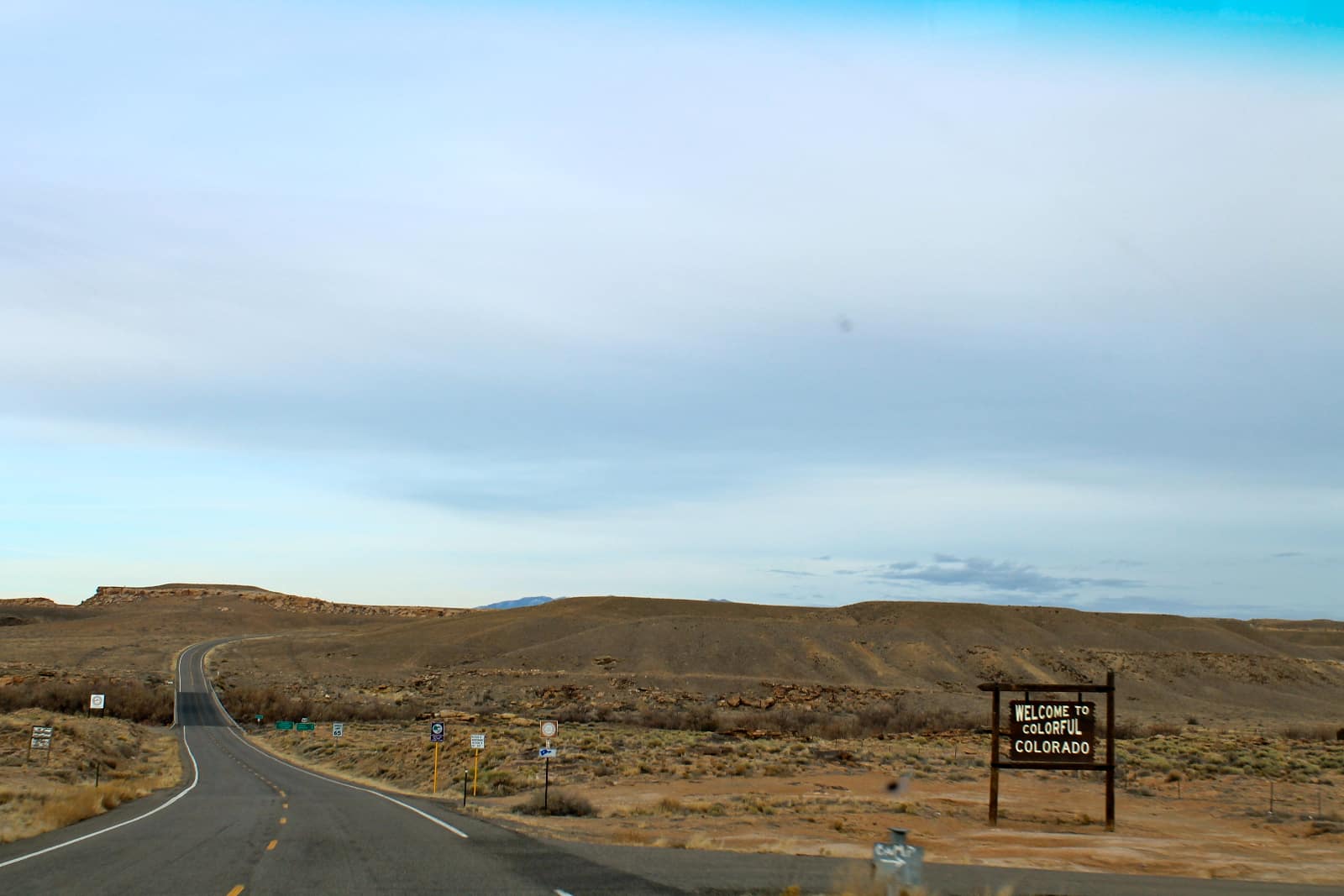 Desert landscape in Colorado. Photo by: zakattak
Desert landscape in Colorado. Photo by: zakattak
Geographically, Colorado is dominated by mountains, foothills, plains, and even deserts. In general, the state’s climate is divided between high-altitude alpine and semi-arid.
The alpine climate is found in the mountains, which have four distinct seasons. Although it can get hot in the summer, it’s typically cooler all year long.
Colorado’s dryness comes from its semi-arid climate. This includes the eastern portion of the state from the foothills to the plains and southern deserts. May and June are Colorado’s wettest and stormiest months.
The unique blend of climates means that Colorado is prone to having weird weather. Sometimes in a single day, there can be dramatic temperature and weather changes. This is especially true between seasons when sunny spring days can quickly become cold, cloudy, and snowy.
Generally, this means that temperatures drastically rise in summer and lower in winter. However, there are a few low-elevation places where the year-round climate stays (relatively) warmer and drier.
Elevation
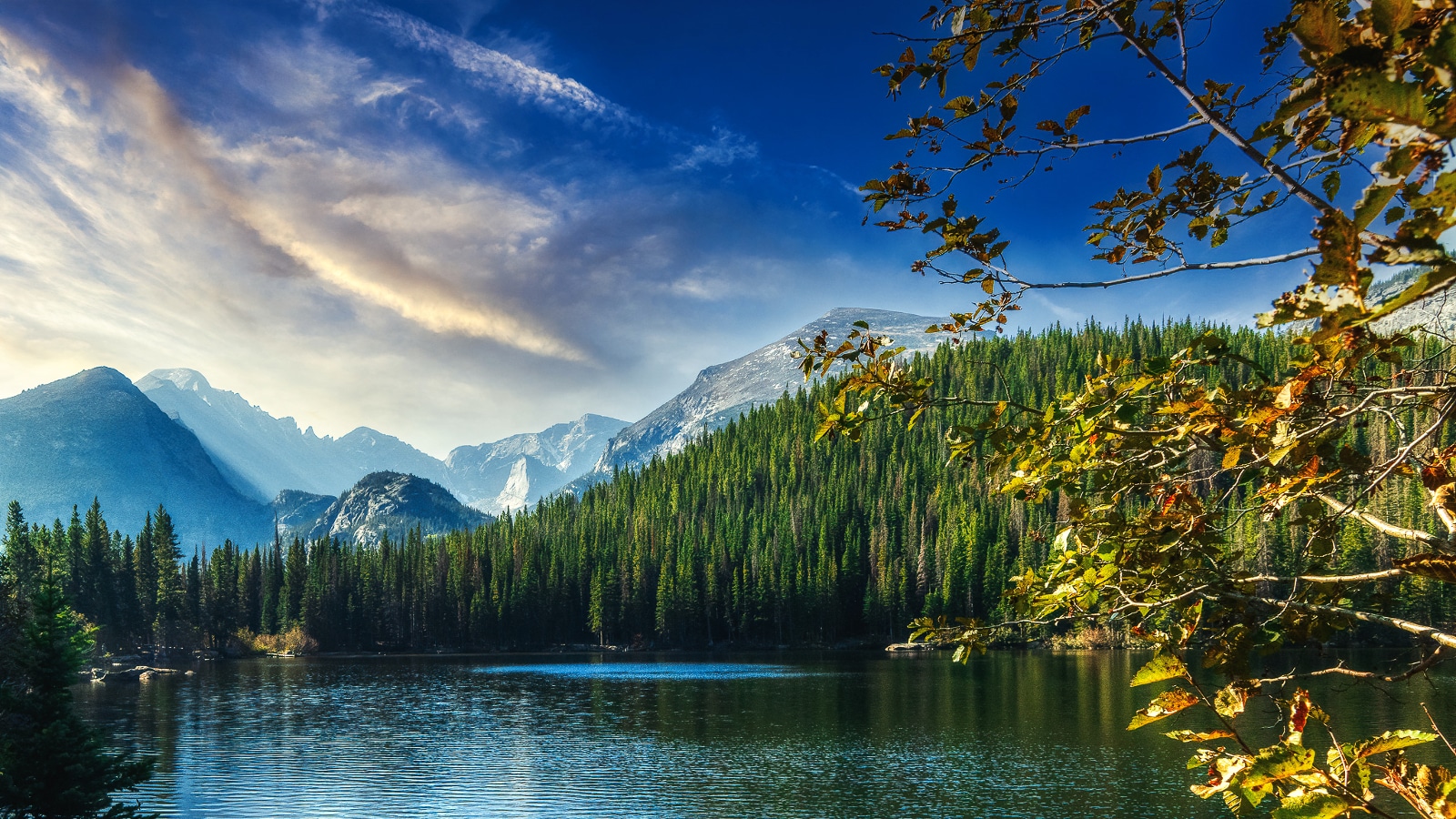 Clear blue skies in the mountains of Colorado. Photo by: G Lamar
Clear blue skies in the mountains of Colorado. Photo by: G Lamar
Besides the climate, elevation is a major factor in Colorado’s temperatures. Up in the Rocky Mountains, the towns typically reside at 6,000 feet (1,829 meters) and above. Although there are a few exceptions, a majority of mountain destinations have an alpine climate, which makes them very cold during the winter.
Colorado’s average elevation is 6,800 feet (2,072 meters). Cities and towns that sit at 7,000 feet (2,133 meters) or less will typically experience milder winters and hot summers.
Colorado’s warmest places are found either on the far western portion of the state where elevations lie around 4,500 feet, the Front Range Urban Corridor, or south of it, usually ranging from 5,000 to 6,000 feet, as well as in the Eastern Plains, which goes from around 5,000 feet to 3,315 ft.
The highest town in the state is Alma at 10,578 feet, followed closely by Leadville at 10,152 ft. There are many communities that sit around 9,000 feet or higher, such as those in Summit County, Silverthorne (9,035′) Breckenridge (9,600′), or even Fairplay at a whopping 9,953′; those are some cold places come wintertime.
Hottest Place in Colorado
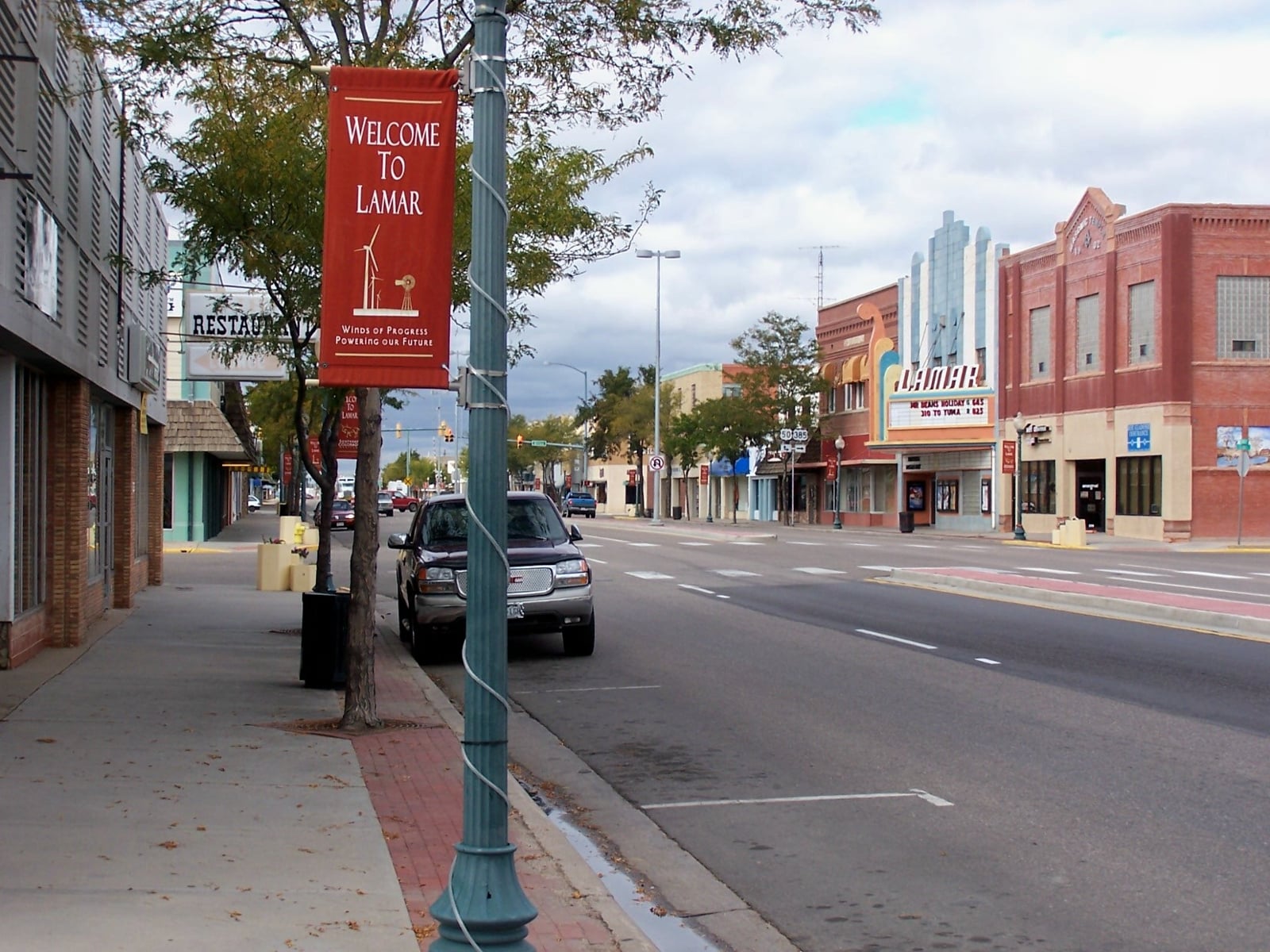 Lamar, the hottest place in Colorado. Photo by: J. Stephen Conn
Lamar, the hottest place in Colorado. Photo by: J. Stephen Conn
The hottest places are found in the southeast corner of the state. Las Animas, Otero, Crowley, Kiowa, Bent, Prowers, and Baca are particularly warm counties in this area.
The highest heat records in Colorado were recorded in Las Animas, Sedgwick, and Lamar. In 1933, La Animas hit 114 degrees Fahrenheit (45.5 degrees Celsius) and in 1954, Sedgwick hit the same temperature.
The record for the highest temperature in Colorado was broken in 2019 when the small town of Lamar hit 115 degrees Fahrenheit (46.1 degrees Celsius). However, even though Lamar can reach scorching heat levels in the summertime, the winters can still be very cold with average coldest temperatures reaching as low as 14 degrees Fahrenheit (-10 degrees Celsius).
The drastic temperature changes between seasons are a prime example of Colorado’s semi-arid climate.
Warmest Places in Colorado
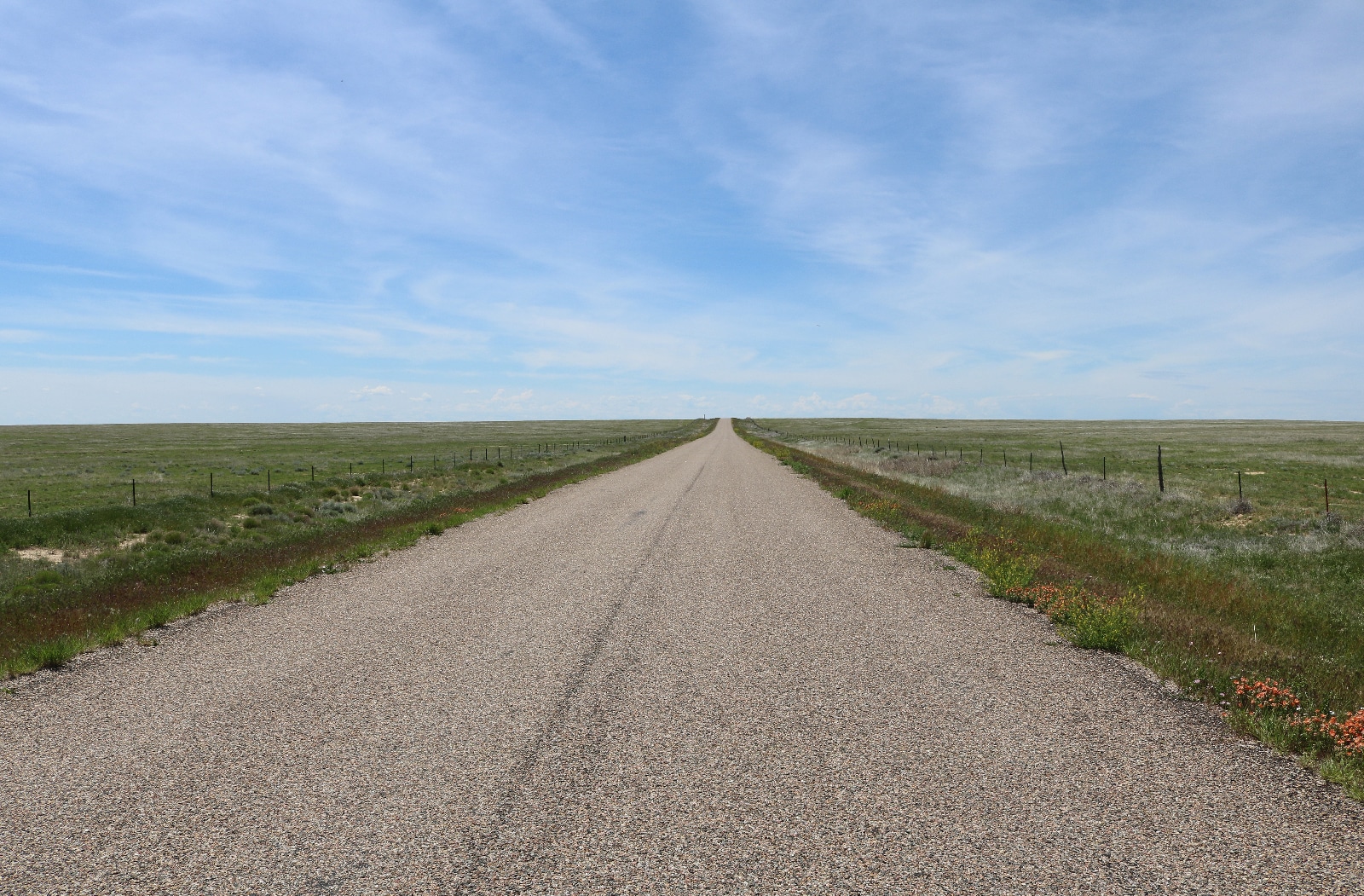 Wide open plains in Eastern Colorado. Photo by: Jeffrey Beall
Wide open plains in Eastern Colorado. Photo by: Jeffrey Beall
Looking at the larger towns and cities outside of the mountains, these are the warmest places in Colorado. With elevations that range from around 4,000 to 6,000 feet (1219-1,829 meters), the weather in these places is mild (for Colorado) throughout the year.
In general, winter is always cold here, but with lots of sunshine and less snow, these places typically avoid dropping into the negative digits. And they will get the sporadic 50 and 60 degree wintertime days. Whether you’re looking to stay long-term in the state or are just visiting, these destinations are favorable spots all year-round.
Sterling
3,987ft/1,200m
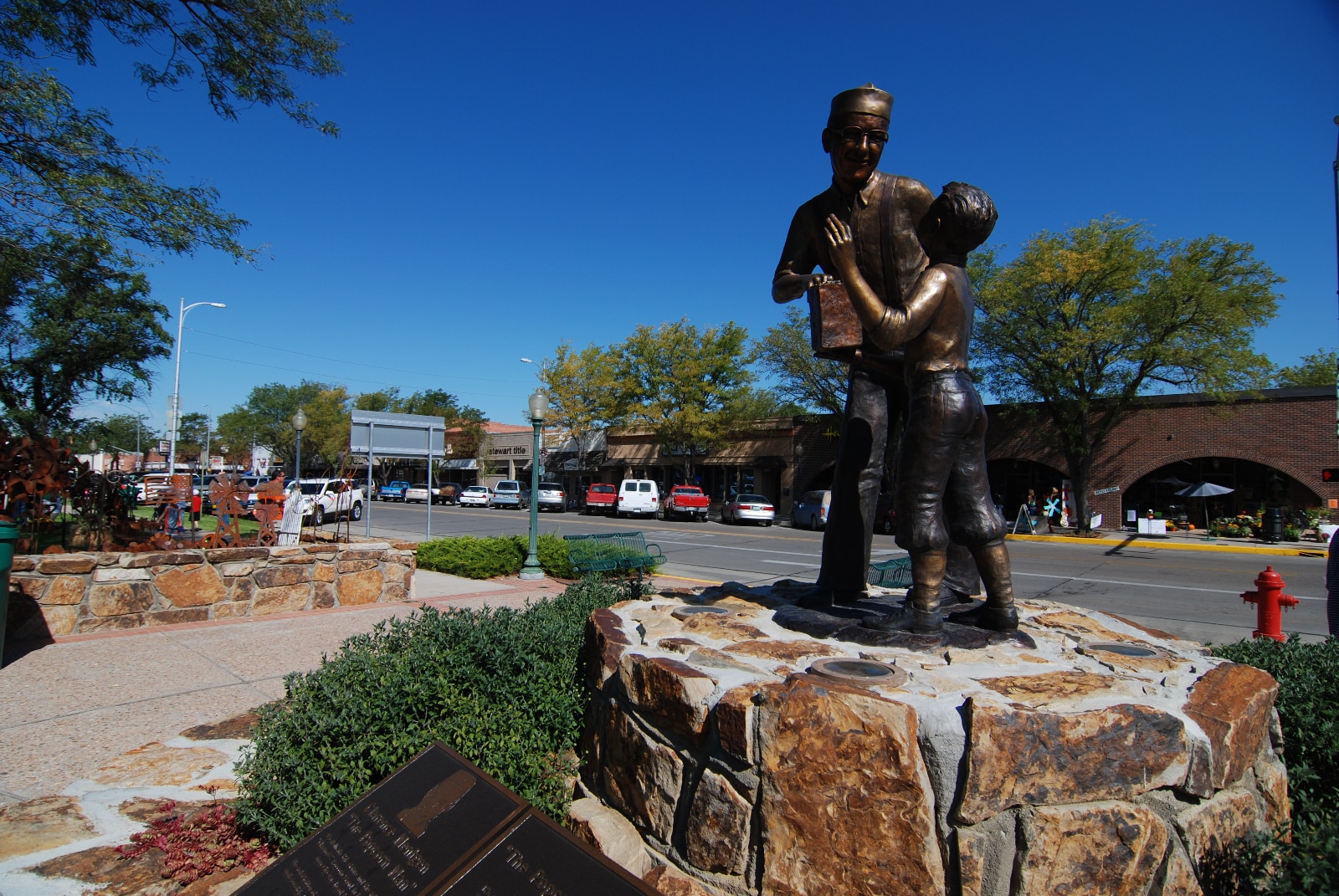 The main street in Sterling, Colorado. Photo by: Kent Landerholm
The main street in Sterling, Colorado. Photo by: Kent Landerholm
Within the northeastern plains of Colorado, Sterling sits at a fairly low elevation of 3,875′, making it one of the warmest places to settle down for the winter.
Most years, the average winter temperature stays in the double digits. Summertime can be very hot with temperatures soaring into the 90 degrees Fahrenheit (32.2 degrees Celsius) range. On average, December is the coldest month in Sterling, while July is the hottest.
Fruita
4,514ft/1,376m
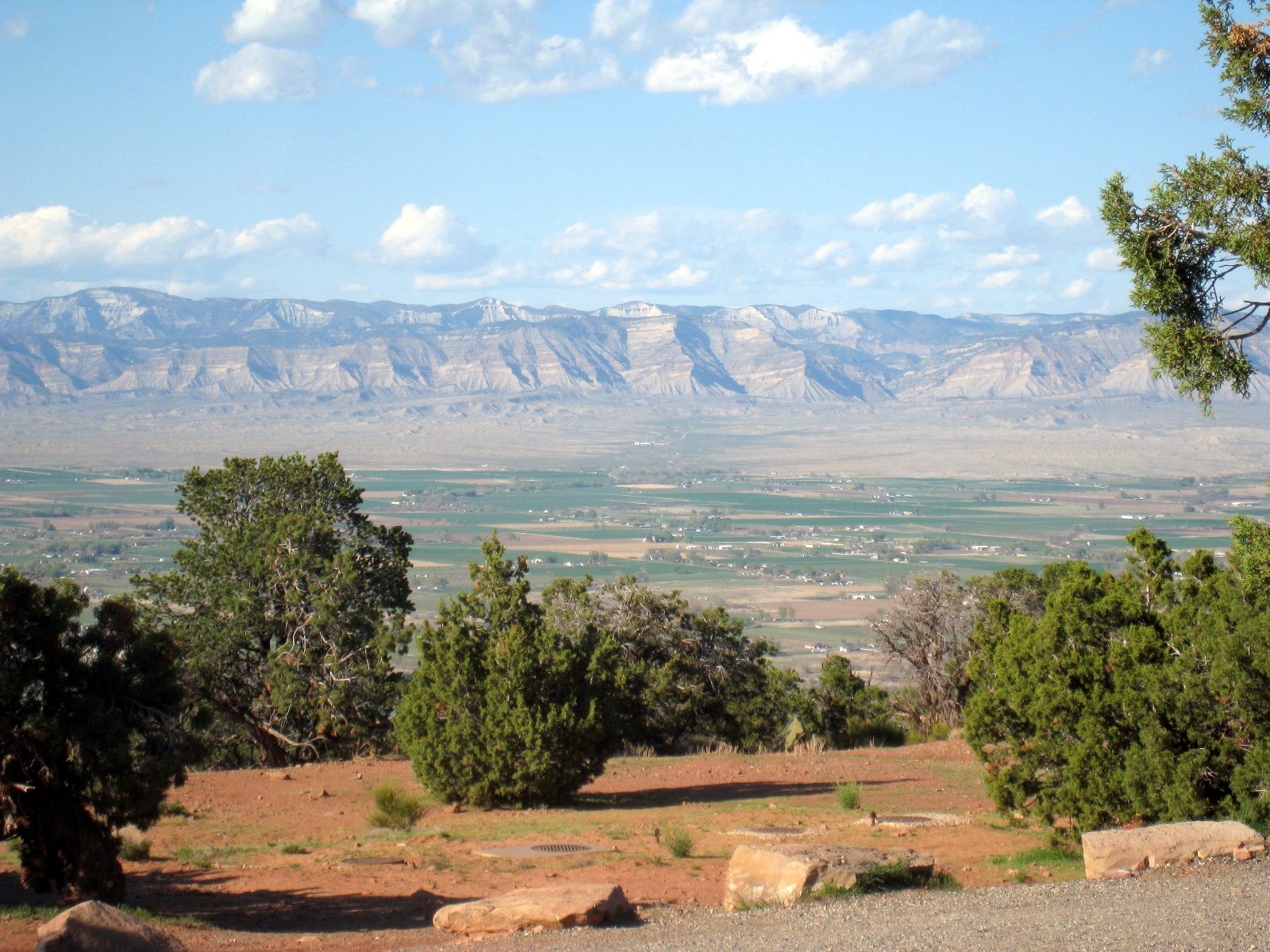 Landscape of Fruita, Colorado. Photo by: Josh Gray
Landscape of Fruita, Colorado. Photo by: Josh Gray
Close to Grand Junction, Fruita is in a unique area of the state where lower elevations on the Western Plateau lead to milder winters. With higher temperatures year-round, it normally doesn’t have a lot of snow.
While it’s always possible for temps to drop into the negatives, on average the lowest winter temperature is about 13 degrees Fahrenheit (-10.5 degrees Celsius).
During the summer, it regularly soars to well above 90 degrees Fahrenheit (32.2 degrees Celsius) and on the hottest days, it can even exceed 100 degrees Fahrenheit (37.7 degrees Celsius).
Grand Junction
4,593ft/1,400m
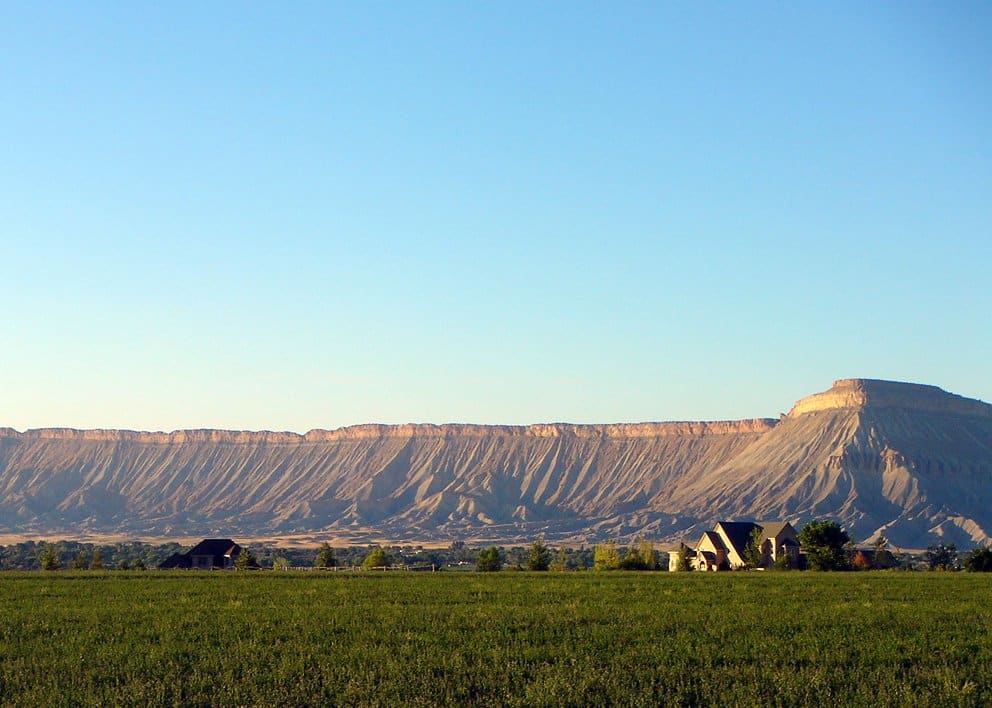 Landscape of Grand Junction, Colorado. Photo by: Sean
Landscape of Grand Junction, Colorado. Photo by: Sean
Grand Junction is a major city on Colorado’s far Western Slope, close to Fruita. Temperatures in Grand Junction are sometimes warmer than in Fruita, but typically around the same.
Summertime here on the Western Plateau is hot. During the hottest months of the year, July and August, the daily average temperatures exceed 90 degrees Fahrenheit (32.2 degrees Celsius).
The city’s warmer climate means that when winter does arrive, it’s fairly short with snow typically only sticking to the ground from December to February.
The lowest average winter temperature in Grand Junction is 18 degrees Fahrenheit (-7.7 degrees Celsius). However, it isn’t uncommon for daytime temperatures to exceed 40 degrees Fahrenheit (4.4 degrees Celsius).
Pueblo
4,692ft/1,430m
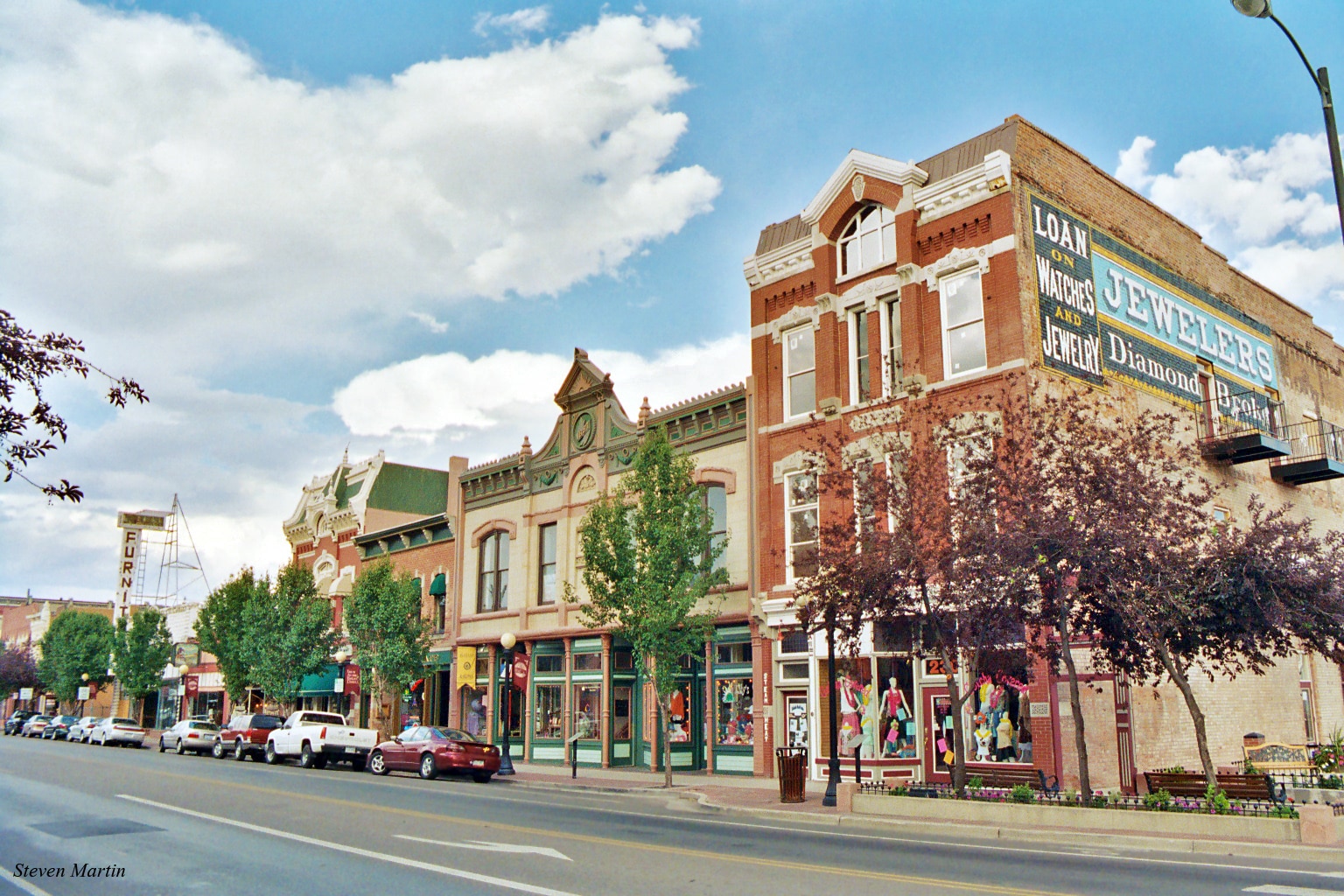 Historic Main Street in Pueblo, Colorado. Photo by: Steven Martin
Historic Main Street in Pueblo, Colorado. Photo by: Steven Martin
Pueblo is one of the largest cities in Colorado that has a very warm, year-round climate and a lower elevation than both Denver and Colorado Springs. Located pretty far south along the Front Range, the city receives just 25.1 inches of snow per year on average.
January is the coldest month, with the lowest average hovering around 12 degrees Fahrenheit (-11.11 degrees Celsius). However, even in January, most days in Pueblo are still well above freezing with the average sitting at 43 degrees Fahrenheit (6.1 degrees Celsius).
Summer is hot and dry in Pueblo. In July, temperatures often exceed 90 degrees Fahrenheit (32.2 degrees Celsius).
Fort Collins
5,003ft/1,525m
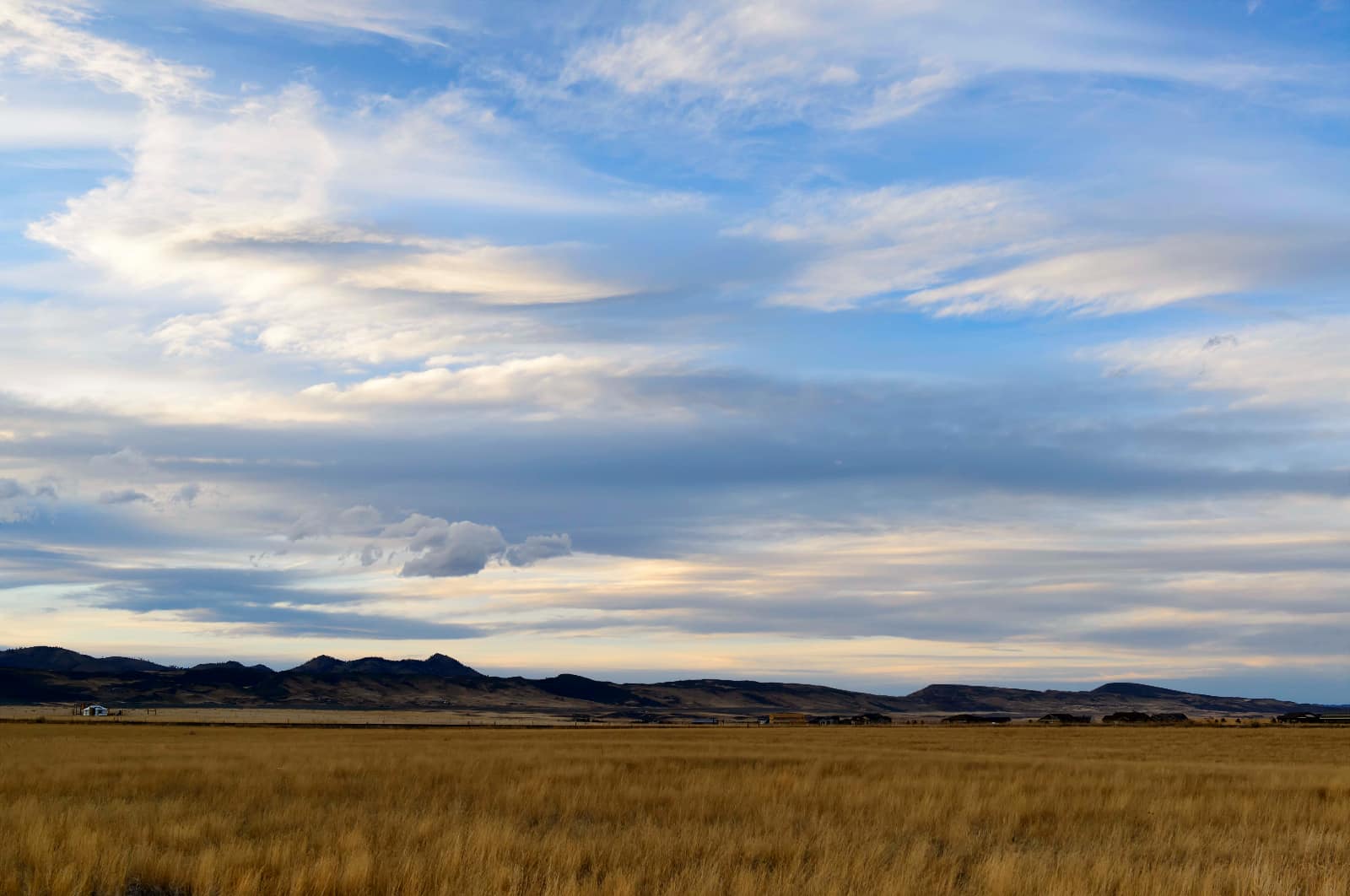 Landscape of Fort Collins, Colorado. Photo by: Rich Herrmann
Landscape of Fort Collins, Colorado. Photo by: Rich Herrmann
Fort Collins is a major city on the Northern Front Range that has a relatively low elevation. Staying warmer year-round, 17 degrees Fahrenheit (-8.3 degrees Celsius) is the lowest average temperature for winter.
From December to February, most days in Fort Collins are above 40 degrees Fahrenheit (4.4 degrees Celsius). Summer in Fort Collins can get hot, but the slightly higher elevation typically helps average temperatures stay below 90 degrees Fahrenheit (32.2 degrees Celsius).
The great weather in Fort Collins makes it a popular destination in Colorado. Annually, there are around 237 days of sunshine, which means that residents and visitors can always get out and spend time outdoors.
Denver
5,280ft/1,609m
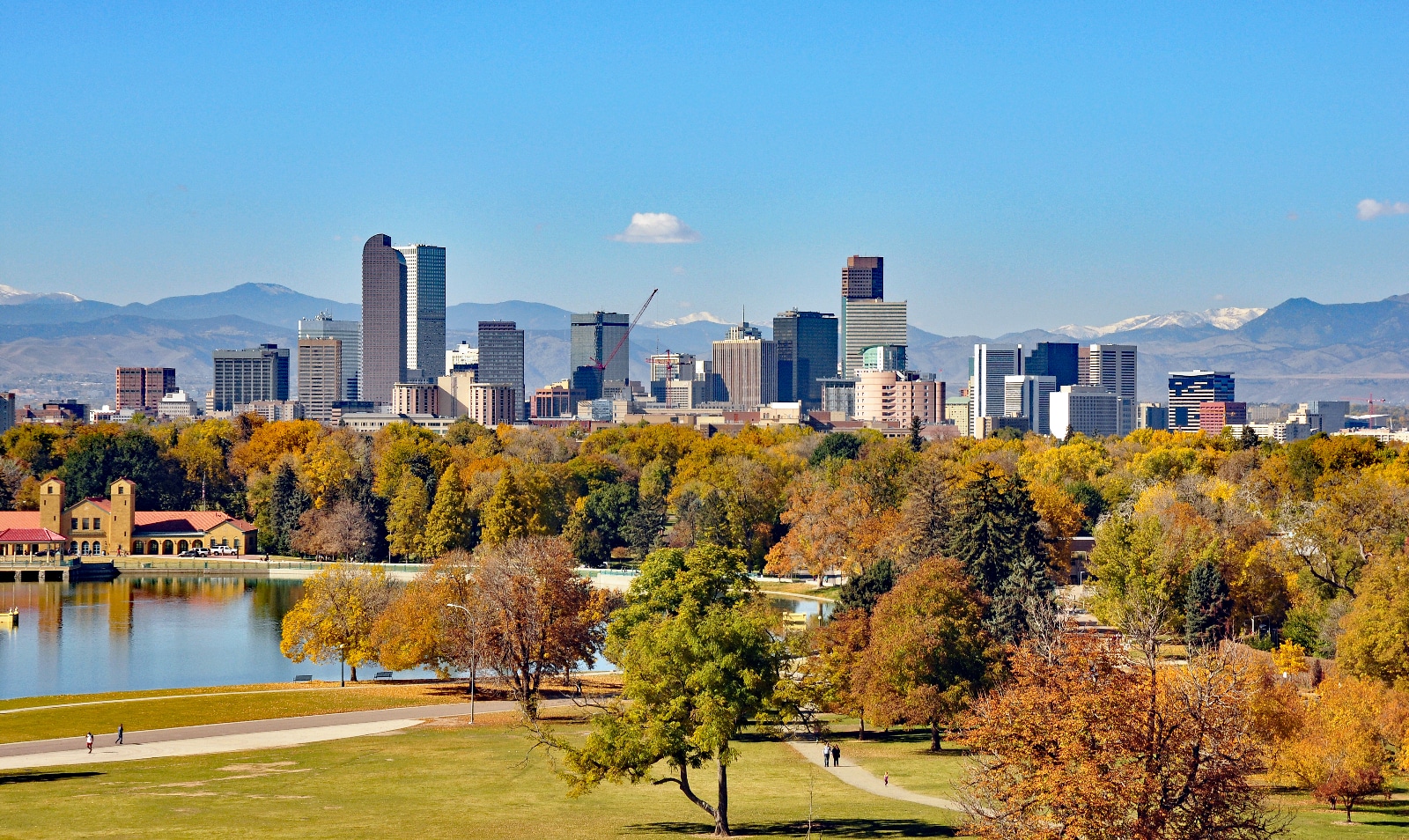 Downtown and the Front Range in Denver, Colorado. Photo by: James St. John
Downtown and the Front Range in Denver, Colorado. Photo by: James St. John
Colorado’s capital, Denver, actually has fairly mild winters. The city has a semi-arid climate, which means that even though it’s dry year-round, it can get very rainy during the late spring months. It’s also very common to have large weather fluctuations in short periods of time, being rainy and sunny or cold and windy before quickly warming up again.
Even with bitterly cold days and blizzards, during an average year, the temperatures in winter tend to hover right around 20 degrees Fahrenheit (-6.6 degrees Celsius).
Summer is hot and dry, especially in July – the hottest month. The average high temperature in July is 92 degrees Fahrenheit (33.3 degrees Celsius).
Boulder
5,328ft/1,624m
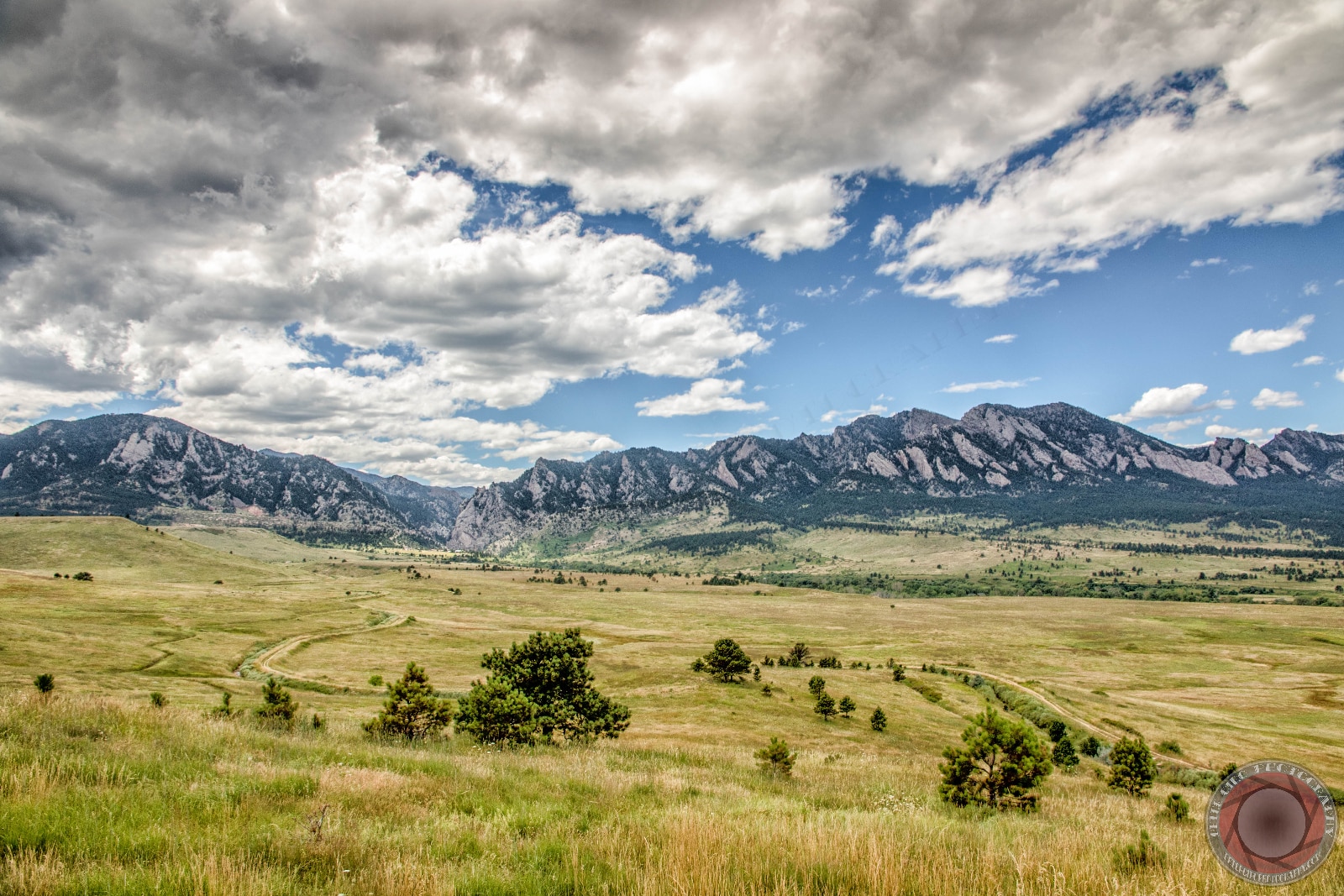 Landscape with the Flatirons in Boulder, Colorado. Photo by: Peter Ciro
Landscape with the Flatirons in Boulder, Colorado. Photo by: Peter Ciro
Boulder has a pleasant climate year-round. Although, the city’s location at the base of the foothills means that it can get pretty cold and snowy during the wintertime. However, on average, temperatures tend to be pleasant throughout the year.
The lowest average temperature is about 22 degrees Fahrenheit (-5.5 degrees Celsius) in January. Normally, on an average winter day, the temperatures sit above 45 degrees Fahrenheit (7.2 degrees Celsius).
Summer brings plenty of sunshine and warmer temperatures, with the average being around the mid-80s from June to August. Temperatures tend to drop at night no matter what the season, so always bring layers for whatever adventure you choose.
Cañon City
5,332ft/1,625m
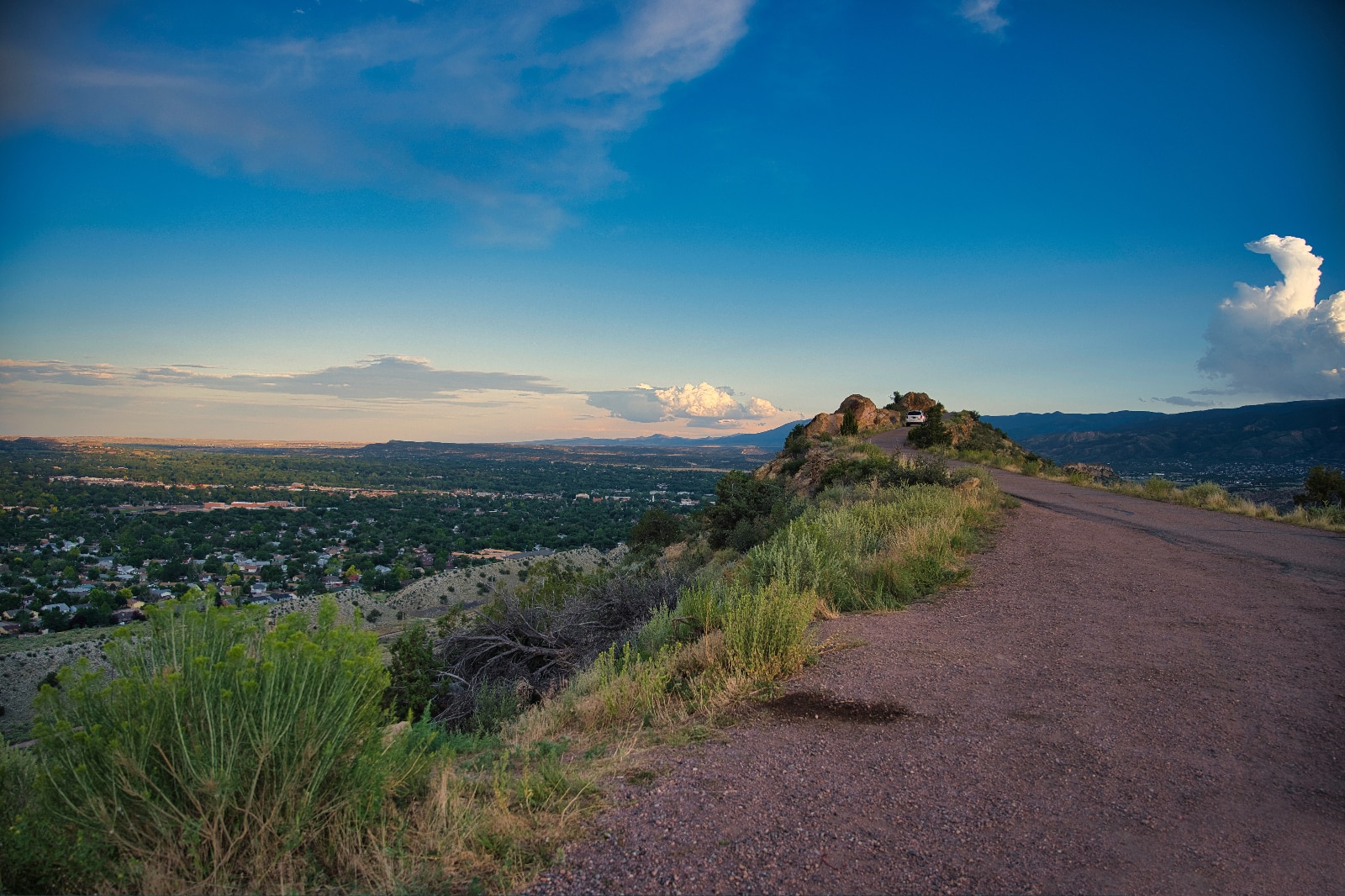 Landscape of Skyline Drive near Cañon City, Colorado. Photo by: Scrubhiker (USCdyer)
Landscape of Skyline Drive near Cañon City, Colorado. Photo by: Scrubhiker (USCdyer)
Cañon City sits at a higher elevation, but surprisingly the average year-round temperatures tend to be fairly high. With winter temperatures staying above 20 degrees Fahrenheit (-6.6 degrees Celsius), the weather is warmer because of the city’s location on Southern Colorado’s Banana Belt.
The climate in Cañon City is similar to Pueblo, which is just to the southeast of the city. Lots of snow is rare in Cañon City, while the summertime is very hot and dry.
Trinidad
6,010ft/1,832m
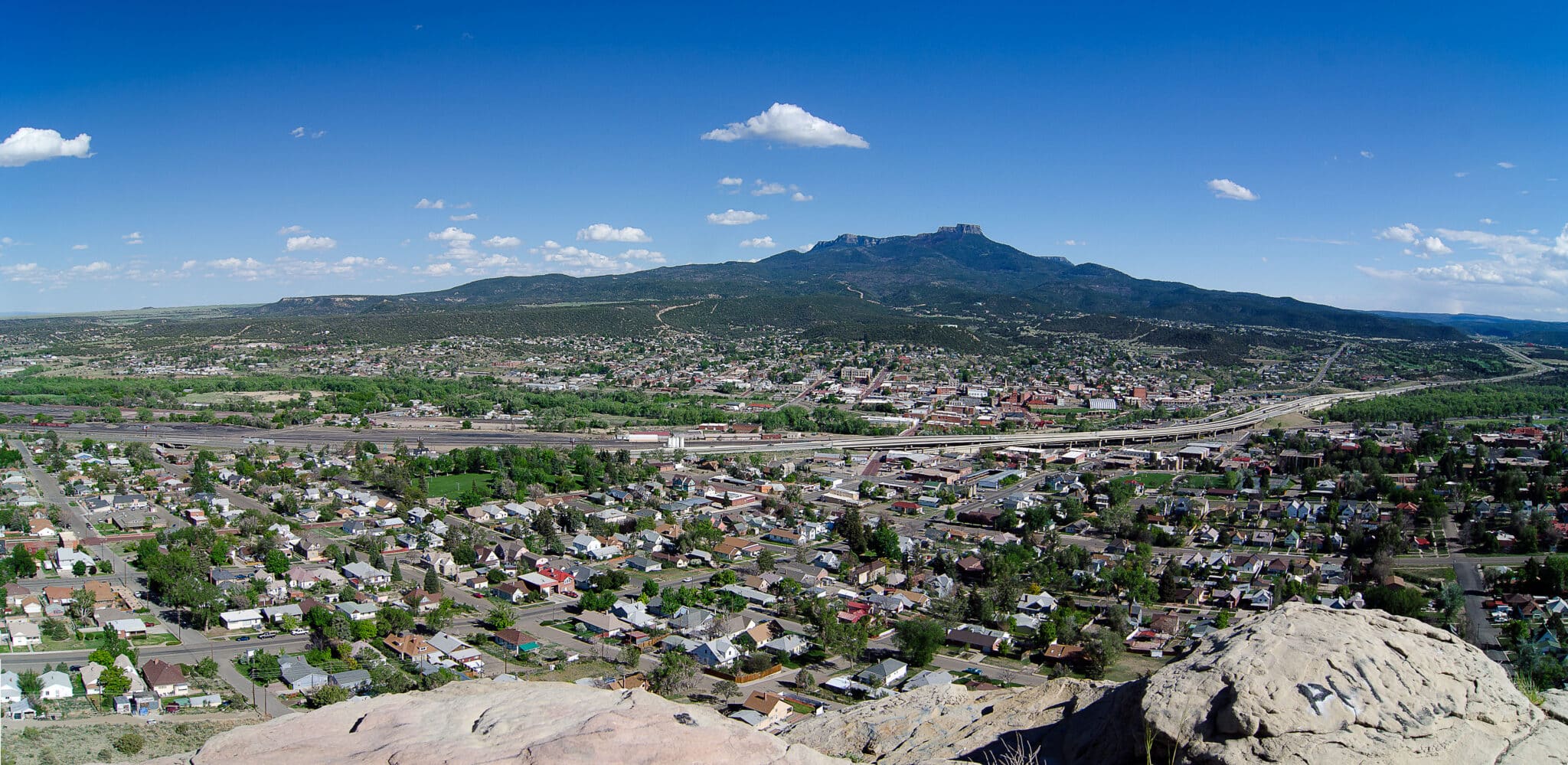 The landscape of Trinidad, Colorado. Photo by: Scrubhiker (USCdyer)
The landscape of Trinidad, Colorado. Photo by: Scrubhiker (USCdyer)
Even though Trinidad has a higher elevation, the city is so far south (just 21 miles from Raton, New Mexico) that the climate tends to be mild throughout the year.
The lowest average winter temperatures tend to stay around 20 degrees Fahrenheit (-6.6 degrees Celsius), while summer highs are normally lower than 90 degrees Fahrenheit (32.2 degrees Celsius).
A typical winter will see the coldest days hit first in December. As December turns to January, the temperatures begin to rise and by late February, the majority of the harshest conditions will have passed.
Colorado Springs
6,035ft/1,839m
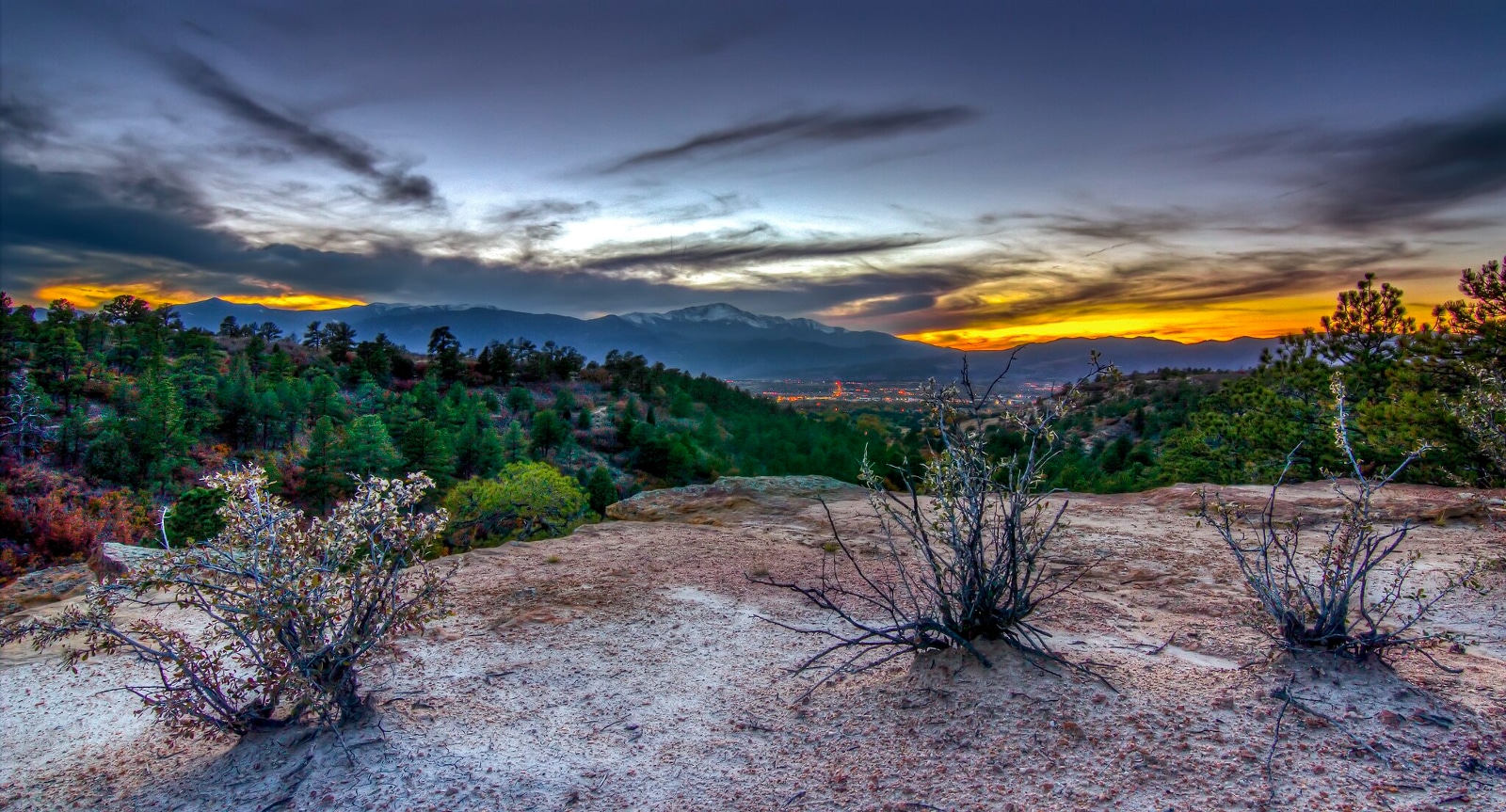 Mountain landscape of Colorado Springs, Colorado. Photo by: Joel Tonyan
Mountain landscape of Colorado Springs, Colorado. Photo by: Joel Tonyan
Another city along the Front Range that has mild winters is Colorado Springs. Even with an elevation above 6,000 feet (1,828 meters), the city stays relatively warm throughout the year.
Winter temperatures can drop to about 17 degrees Fahrenheit (-8.3 degrees Celsius), but most days, the temperature stays above 40 degrees Fahrenheit (4.4 degrees Celsius).
One benefit of the higher elevation (than other plains cities) is that summer normally hovers around 85 degrees Fahrenheit (29.4 degrees Celsius) on most days. However, be prepared for higher temperatures, and make sure you bring your sunscreen if you’ll be outside.
Warm Mountain Towns
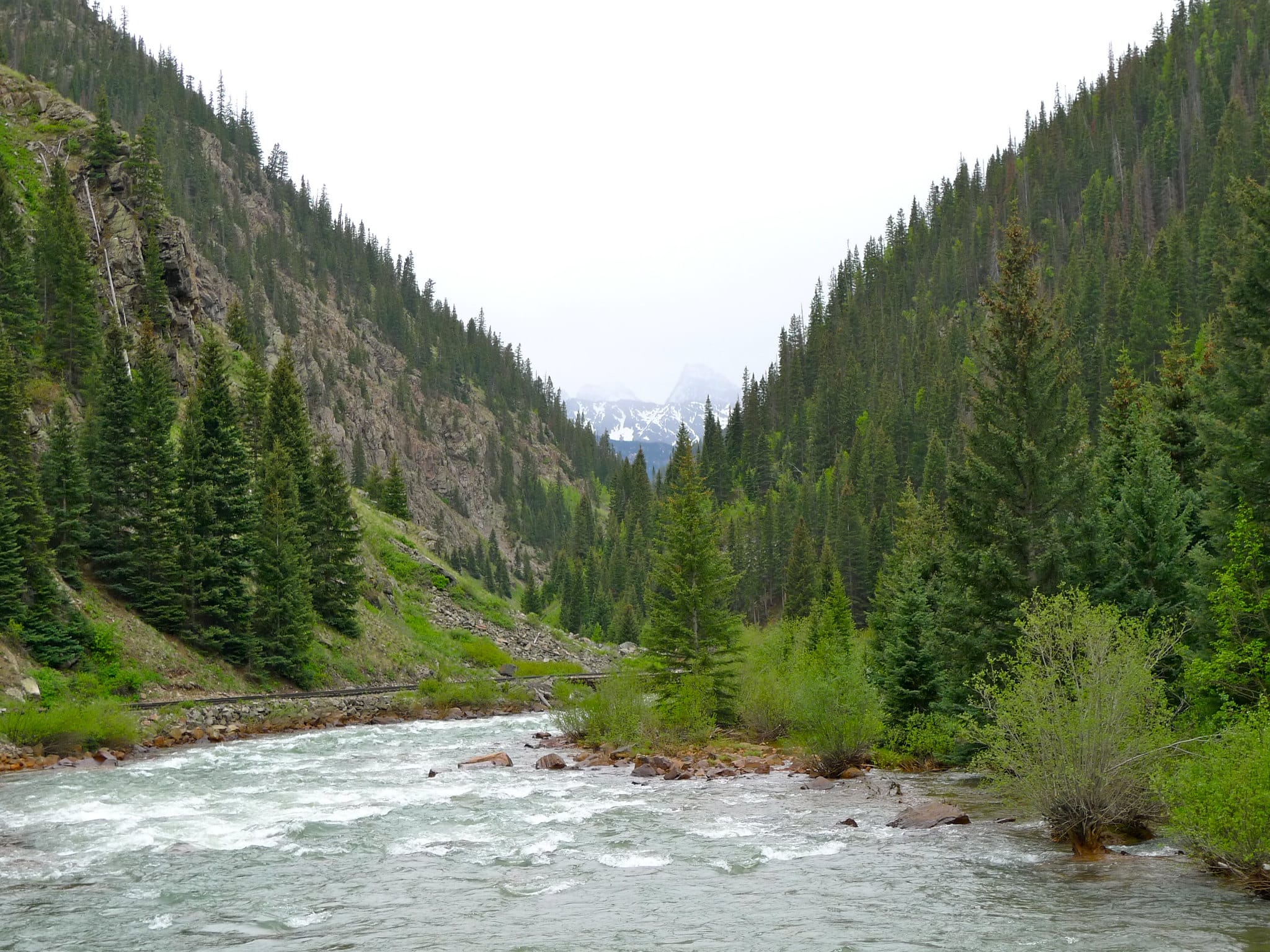 Las Animas River, near Durango, Colorado. Photo by: robert thigpen
Las Animas River, near Durango, Colorado. Photo by: robert thigpen
Most of Colorado’s mountain towns sit at such high elevations that winter can truly be bitterly cold with strong blizzard conditions. While harsh weather is always possible in any alpine community here, one southwestern destination that tends to have milder conditions is Durango.
There are also some places on the western slope low enough to be fairly mild.
Durango
6,512ft/1,985m
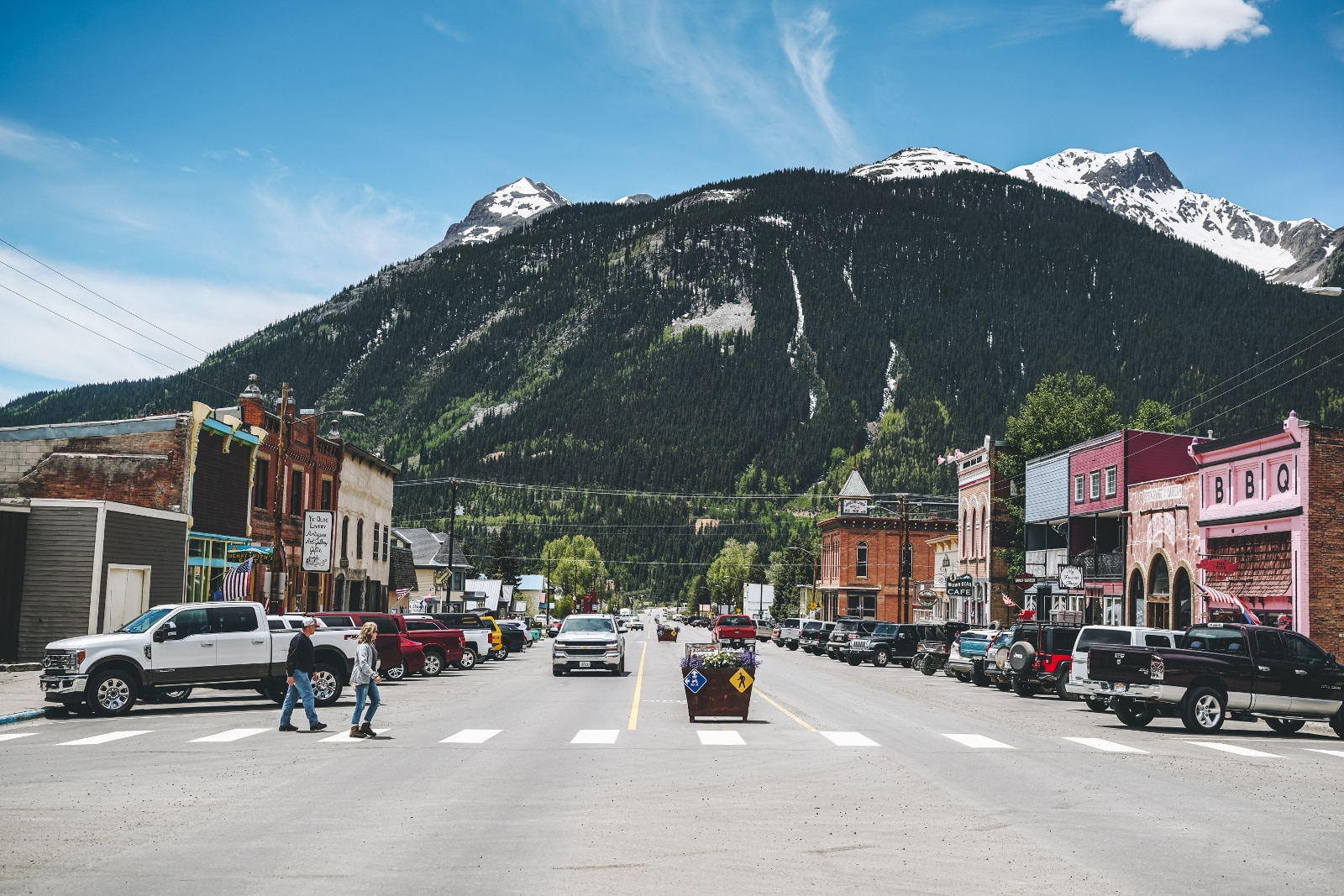 Main street in the city of Durango, Colorado. Photo by: Cody Wellons
Main street in the city of Durango, Colorado. Photo by: Cody Wellons
Durango sits at a lower elevation for a mountain town, and it’s also located in the southwestern corner of the state. Even surrounded by mountains, the average temperatures are above 10 degrees Fahrenheit (-12.2 degrees Celsius) in winter.
When comparing the elevation to the temperatures of other mountain towns, Durango is considered to have a mild climate. An average of only 71 inches of snow falls on the city during winter, which is well below the state’s mountain average of 300 inches.
Glenwood Springs
5,761ft/1,756m
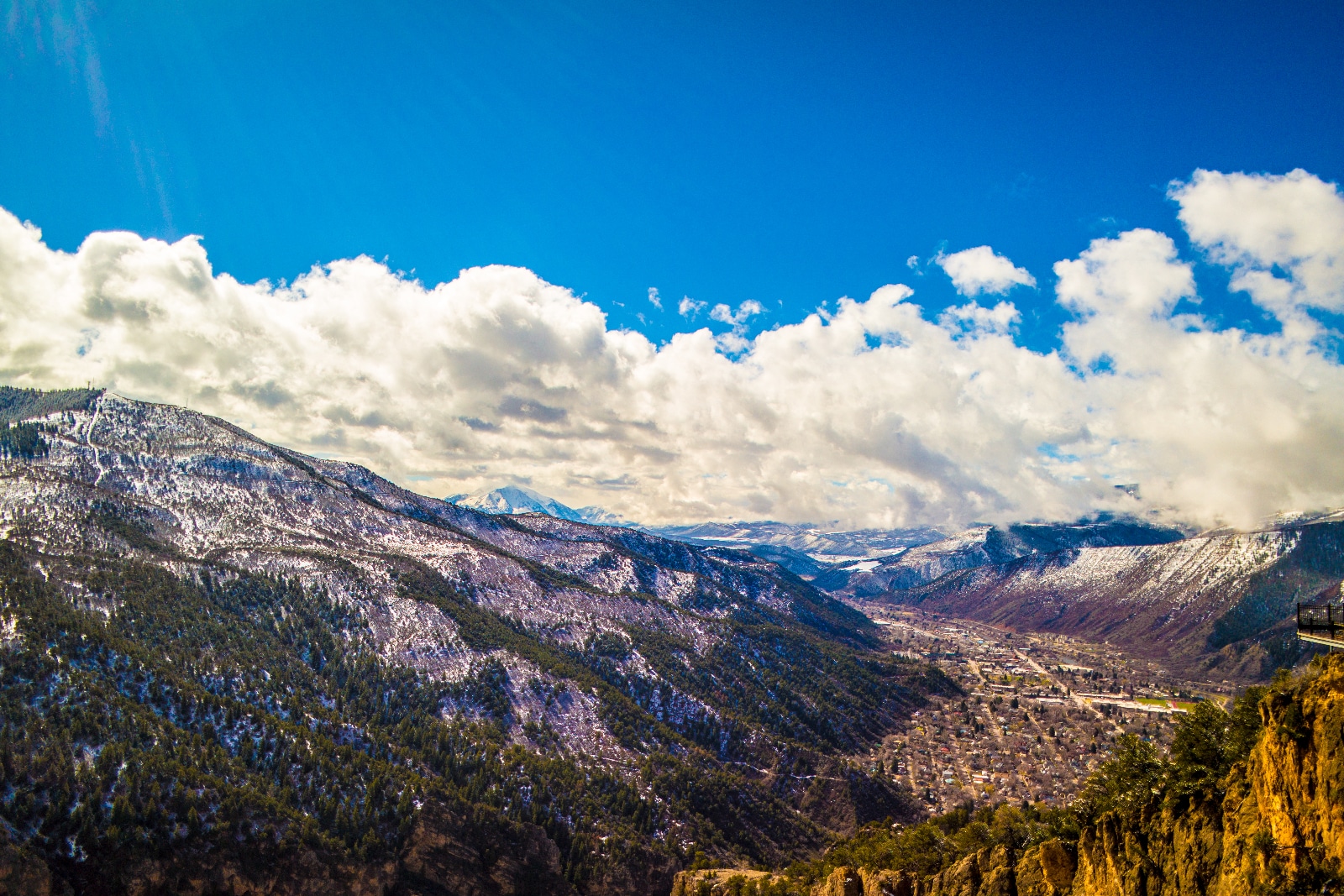 Looking down at Glenwood Springs, Colorado. Photo by: Jason Cipriani
Looking down at Glenwood Springs, Colorado. Photo by: Jason Cipriani
Nestled deep in the mountains near the Colorado River, Glenwood Springs has a fairly low elevation. This is because the city sits deep in Glenwood Canyon.
The actual town can get very cold and snowy, but in general, the average winter temperatures tend to stay in the double digits. Even with the alpine climate, Glenwood Springs is typically comfortable throughout the year, with average summer temperatures hovering around 85 degrees Fahrenheit.
Changing Climate
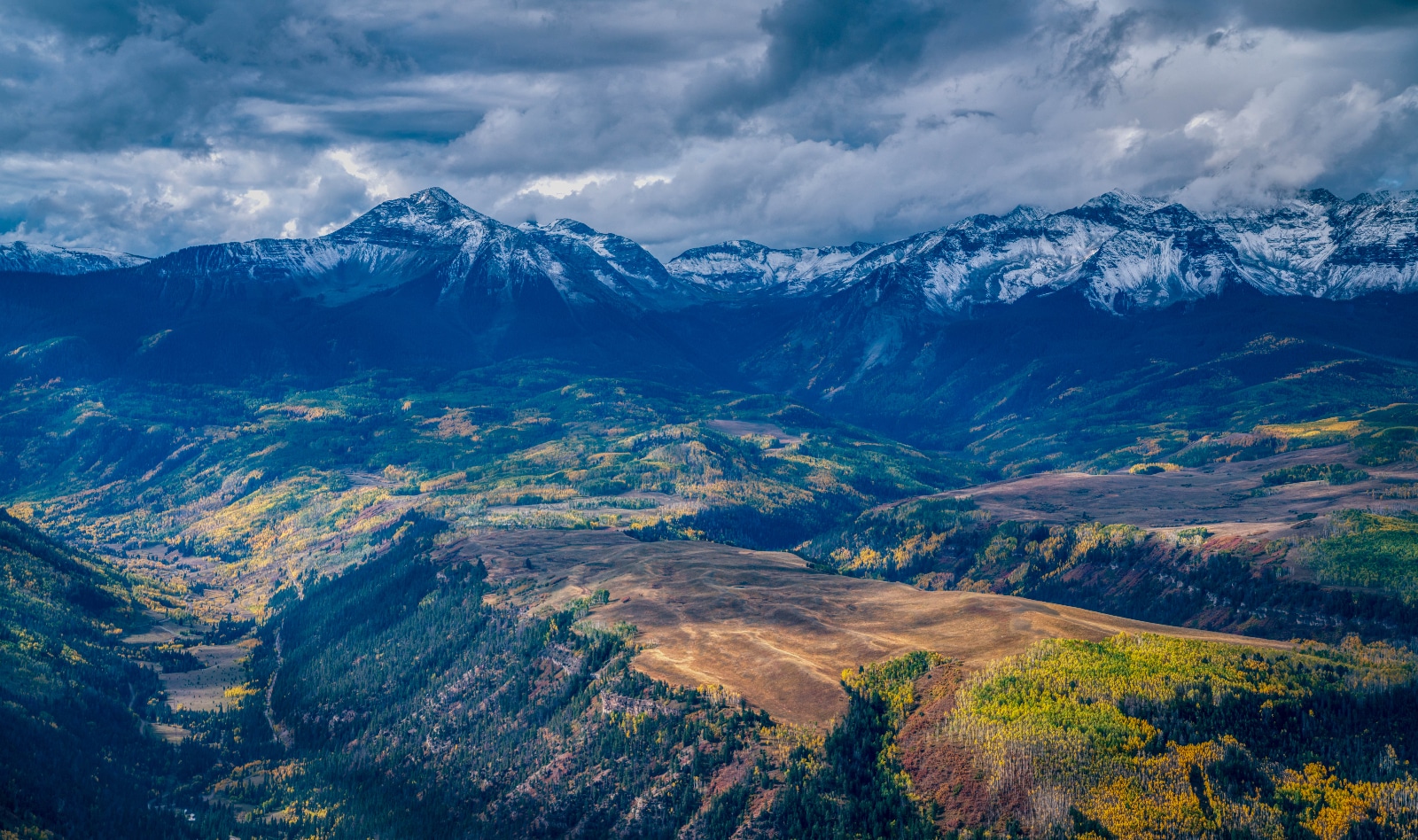 Snow-covered mountain peaks in Colorado. Photo by: CEBImagery
Snow-covered mountain peaks in Colorado. Photo by: CEBImagery
An important factor in Colorado’s weather is climate change. Scientists estimate that in just a few years in 2025, the state will be 2.5 degrees Fahrenheit warmer.
The drastic changes mean that the weather is becoming more erratic. It’s not uncommon for winter weather to change from warm to freezing cold in a single day. Higher temperatures also mean that Colorado will be even drier, which will affect the mountains and its annual snowfall.
Colorado has a reputation for being freezing cold in winter, but there are a few places that may surprise you with their mild climates. Not every place experiences harsh conditions and there are a few spots around the state where pleasant weather is a year-round delight.
